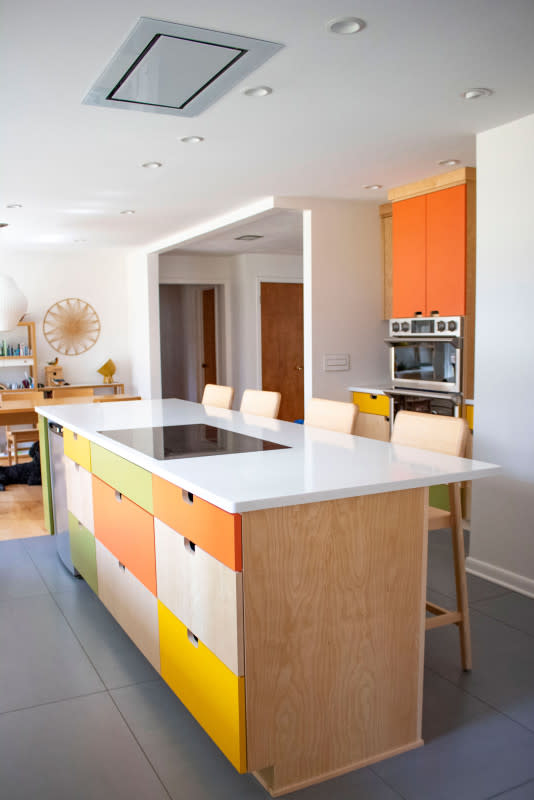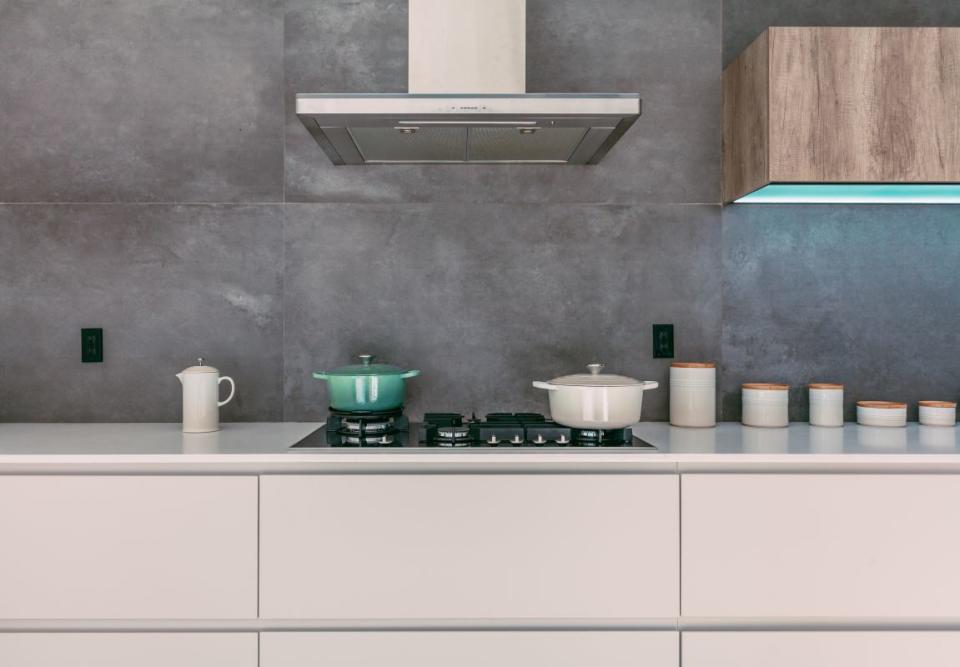The Unrealized Importance of Kitchen Ventilation
Effective kitchen ventilation helps maintain a healthy and comfortable cooking environment. Not only will it enhance indoor air quality (IAQ), but also protects the home from potential damage.
“Stove tops that do not ventilate to the outside allow cooking smoke, airborne particles, and VOCs (volatile organic compounds), and even moisture to spread throughout the home," shares Andy Fox, Filtration and Indoor Air Quality Specialist at 3M. "This can apply to any type of cooktop. If your stove uses gas, the pollution created during combustion is also released into your home without outside exhaust."
Signs That You Have Poor Kitchen Ventilation
The surest sign of poor ventilation is the presence of smoke in the air. Even before the smoke is visible or thick, you may experience throat or eye irritation."Several additional signs can point towards inadequate ventilation, such as windows outside the kitchen fogging up while cooking, and burned cooking smells throughout the home,” adds Fox. Also, consider the duct size. If the ducted range hood is too small for the airflow generated, it can create resistance and reduce efficiency.

Emily Fazio
9 Ways to Improve Your Home's Kitchen Ventilation
Invest in a quality range hood. Upgrade to a high-performance range hood that adequately covers your cooktop and expels cooking fumes and odors. Energy efficiency models perform very well while helping you save money.
Properly size the range hood. Ensure your kitchen hood is the right size for your space. A hood that's too small may struggle to eliminate pollutants, while an oversized one can lead to excessive noise and energy consumption. Likewise, if you have a hood over your kitchen island, make sure it's not installed too high to be ineffective.
Choose ventilation with external exhaust. If possible, opt for ventilation systems that vent to the exterior rather than recirculating air. Ductless hoods are fine if it's the best option, but an external exhaust hood prevents lingering indoors.
Keep your kitchen clean and keep your hood clean. Clean all of your cooking equipment and clean filters regularly. Replacing charcoal filters helps cut down on smells. Grease and debris can accumulate over time. Stainless steel surfaces get smudgy.
Open windows and doors. Natural ventilation allows fresh air to circulate, helping to disperse cooking smells and improve indoor air quality.
Utilize cooking appliances strategically. Be mindful of how and where you cook. Place appliances and ventilation systems in close proximity.
Install a ceiling fan. Consider installing additional fans in the kitchen area. Ceiling fans help to ensure a steady flow of fresh air.
Use cooking lids. When possible, cook with lids on pots and pans. This simple practice helps contain cooking emissions, preventing them from spreading throughout the kitchen.
Upgrade to energy-efficient appliances. Modern, energy-efficient cooking appliances often come with built-in ventilation features. Consider upgrading to appliances that prioritize both performance and environmental impact.
Related: The Impact of Candles on Indoor Air Quality
FAQ
What's the best way to ventilate a kitchen?
Choosing a powerful ventilation system based on the square footage of your space is the best way to guarantee that your home is properly ventilating toxins as you cook. "Over-the-range exhaust fans do a much better job of removing cooking pollution from the back burners," shares Fox. "So, cooking on the back burners can also be helpful."
Are downdraft vents any good?
Yes and no.
The good: For kitchens with open floor plans or ranges with inadequate space for a vent hood, a downdraft vent is a great alternative. They're clean-lined, energy-efficient, and take up very little space.
The bad: The effectiveness of a downdraft system diminishes with distance from the cooking surface. Many products struggle to manage emissions from heavy cooking or capture rising steam and smoke. Installation constraints may limit their placement, impacting overall efficiency. Additionally, they can generate more noise compared to overhead hoods.

Photo by Le Creuset on Unsplash
What should you look for when buying a new range hood?
Venting Options: Choose between ducted and ductless range hood models based on your kitchen's layout and your preference for venting air from cooking to the outdoors (ducted) or using recirculation (ductless hoods).
Airflow Capacity: Consider the cubic feet per minute (CFM) rating to ensure the range hood offers proper ventilation for your kitchen's size and cooking needs. Moderate cooking requires approximately 200 to 400 CFM (feet of air per minute).
Noise Level: Look for a cooker hood with a low sone rating for quieter operation, especially if your kitchen is open to living spaces.
Design and Style: Select a range hood that complements your kitchen decor and fits seamlessly with your appliances. Some types of range hoods have built-in lighting, a remote control, and adjustable speed settings for controlling fan speed.
Ease of Maintenance: Opt for models with dishwasher-safe filters and accessible components for easy cleaning and maintenance.

